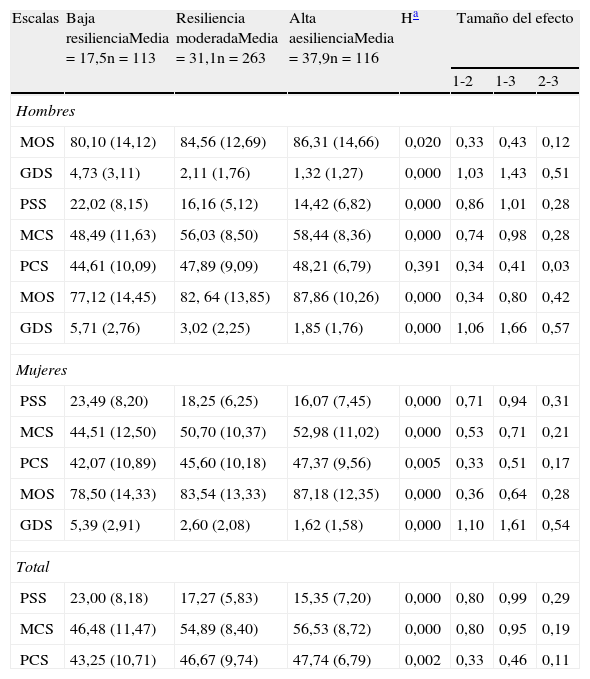Evaluar las características psicométricas de la versión española del CD-RISC de 10 ítems en una muestra de personas mayores no institucionalizadas y examinar si mantiene la misma estructura factorial que muestra la escala original.
MétodoEstudio descriptivo transversal multicéntrico de validación de una escala de medida, realizado en 5 zonas básicas de salud de la provincia de Cuenca. Se realizó un muestreo aleatorizado simple, cumplieron los criterios de inclusión 500 mayores, entre 60 y 75 años. Mediciones: variables sociodemográficas, cuestionario Pfeiffer, CD-RISC-10 (resiliencia), PSS (estrés percibido), los componentes físico y mental del SF-12 Mental Status, GDS (depresión geriátrica) y MOS (apoyo social).
ResultadosEncontramos un único factor subyacente en la escala CD-RISC de 10 ítems. La estructura factorial se testó mediante análisis factorial confirmatorio, comprobándose que un modelo de un único factor mostraba aceptables valores de bondad de ajuste tanto en hombres como en mujeres. La consistencia interna de los ítems se realizó mediante el α de Cronbach que fue de 0,81. Respecto a la validez convergente, las puntuaciones globales de la versión española del CD-RISC-10 correlacionaron directamente con el MOS y los componentes físico y mental del SF-12, e inversamente con las de PSS y GDS.
ConclusionesLa versión española del CD-RISC-10 mostró buenas propiedades psicométricas y por lo tanto puede ser utilizada como un instrumento válido y fiable para medir la resiliencia en la población de mayores no institucionalizados.
To examine the psychometric properties of the Spanish version of the CD-RISC 10-items in a sample of the elderly population of Cuenca, Spain; and to assess if the Spanish version preserves the same factorial structure as the original one.
MethodsA cross sectional study was conducted in five health centres in the province of Cuenca. The study included a random sample of 500 people aged 60—75 years who lived within the community. Measurements: The sociodemographic variables, CD-RISC-10 (resilience), PSS (perceived stress), SF-12v2, Pfeiffer Short Portable Mental Status questionnaire, GDS (geriatric depression), and MOS (social support), were all used to gather data. The number of factors underlying the CD-RISC 10 items was analysed using exploratory factor analysis. Furthermore, this factor structure was tested by confirmatory factor analysis.
ResultsA single underlying factor was found in the CD-RISC 10 items. The factor structure was tested using confirmatory factor analysis and it was found that a single factor model showed acceptable goodness of fit values for both men and women. Convergent validity was performed to test whether the mean scores of the variables were significantly associated with resilience. The Cronbach's α coefficient for the CD-RISC 10 items scale was 0.81. The overall scores of the Spanish version of the CD-RISC-10 items correlated directly with MOS and the physical and mental components of SF-12, and inversely with the PSS and GDS.
ConclusionsThe Spanish version of the CD-RISC-10 showed good psychometric properties. Thus, it can be used as a valid and reliable instrument to measure resilience in the non-institutionalized older population.
Artículo
Comprando el artículo el PDF del mismo podrá ser descargado
Precio 19,34 €
Comprar ahora










